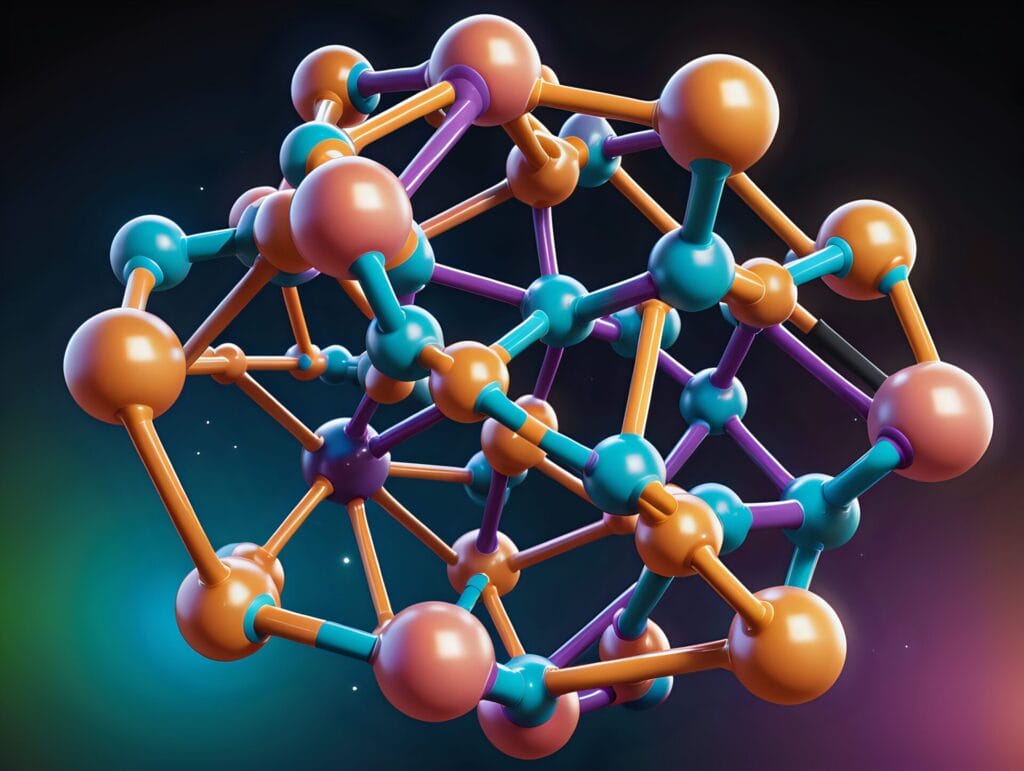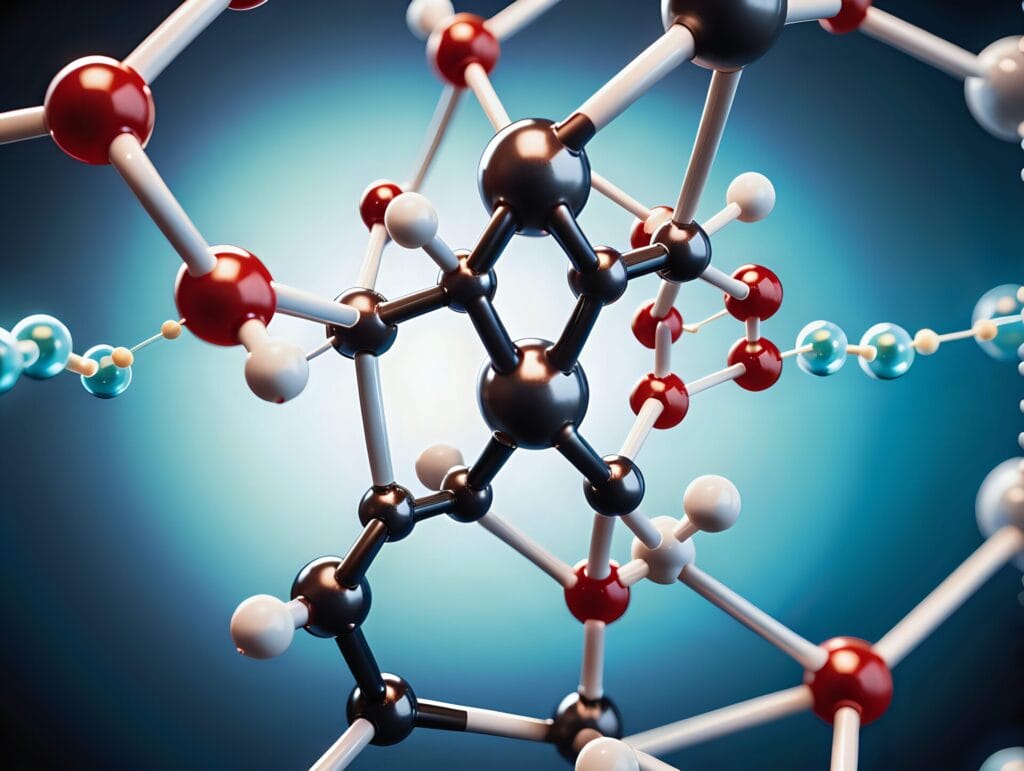Understanding Glutathione Peroxidase Enzyme Function
At the forefront of cellular protection, glutathione peroxidase (GPx) stands as a critical defender against oxidative damage, ensuring the maintenance of cellular health through its significant enzyme activity. Each cell in our body relies on these enzymes to mitigate oxidative stress, thereby preventing the accumulation of harmful hydroperoxides that can disrupt cellular integrity. Identified by Gordon C. Mills in 1957, GPx’s primary biochemical function is the reduction of lipid hydroperoxides and hydrogen peroxide, converting these potentially dangerous substances into harmless compounds.
With a variety of isozymes tailored to specific locations and functions within mammalian tissues, glutathione peroxidase’s role extends beyond general protection. GPx1, in particular, serves predominantly in the cytoplasm, targeting the reduction of hydrogen peroxide to safeguard delicate intracellular systems. This enzyme’s activity is pivotal not just for mitigating immediate oxidative damage but also for sustaining long-term cellular vitality and resilience against disease.
Understanding the detailed functionality of GSH peroxidase is essential, not only for the scientific community but for advancing therapeutic approaches that leverage this enzyme’s protective capacities. It is the silent guardian within our cells, tirelessly neutralizing threats and preserving the delicate balance of our body’s biological systems.
The Pivotal Role of Glutathione Peroxidase in Oxidative Stress Management
Integral to our body’s cellular fortifications, GSH peroxidase acts as a crucial antioxidant enzyme, relentlessly combatting the pervasive threat of oxidative stress. This enzyme’s pivotal role is to orchestrate the reduction of hazardous hydroperoxides, a mission fundamental to preserving the delicate equilibrium of our cells’ well-being.

A deeper dive into the mechanics of how this enzyme activity transpires reveals a complex but elegantly orchestrated process. The catalytic cycle begins with the oxidation of a selenocysteine moiety situated at the enzyme’s active site by hydroperoxides, yielding a selenenic acid intermediates. This intermediate is then transformed back to its active selenol form upon engaging in a two-step reaction with glutathione (GSH), culminating in the reduction of peroxides to water and the production of oxidized glutathione (GSSG).
Mechanism of Action in Reducing Hydroperoxides
Through this sequence of biochemical events, glutathione peroxidase solidifies its stature as a free radical scavenger, an unsuspecting hero in the microscopic realm. What could have been an onslaught of molecular instability is instead a controlled and precise disarmament of potentially damaging agents, affirming the enzyme’s central part in restricting oxidative damage to cellular structures like lipids, proteins, and even the DNA itself.
Impact on Cellular Redox State
It is not solely the detoxification prowess that defines glutathione peroxidase. Its actions extend into the realm of influencing the cellular redox state, intricately impacting a breadth of metabolic procedures. This includes managing the redox status of pyridine nucleotides, consequently allowing hydroperoxides to exert an influence over physiological processes that include, but are not limited to, detoxification.
For instance, GSH peroxidase mediates the conversion of NADPH to its oxidized counterpart, NADP+, through reactions with hydroperoxides. This transformative event links the enzyme’s function to broader metabolic pathways and underscores the multifaceted roles it plays in maintaining cellular homeostasis and protecting against oxidative stress.
Distinguishing Between Different Isozymes of Glutathione Peroxidase
In the expansive landscape of antioxidant enzymes, the isozymes of GSH peroxidase represent a family of diverse guardians of cellular health. Each isozyme, encoded by distinct genes, assumes a specialized role, tailored to the unique requirements of their cellular location and the specific type of oxidative stress they are designed to mitigate.
One of the most ubiquitous isozymes, GPx1, resides within the cytoplasm of almost every mammalian cell, where it diligently carries out its primary function, the reduction of hydrogen peroxide. This activity is essential to keeping cells shielded from the potentially damaging reactive oxygen species.
The isozyme GPx4 shows a clear preference for a different kind of adversary: lipid hydroperoxides. Unlike its cytoplasmic siblings, GPx4 is a monomeric enzyme and is essential for maintaining the structural integrity of cellular membranes by targeting these lipid-based peroxides.
In the digestive tract and extracellular matrices, GPx2 is the prevailing isozyme, adapting to the specialized demands of these environments. Similarly, GPx3, abundant in plasma, underlines the systemic requirement for antioxidant defense, further exemplifying the adaptive evolution of the GSH peroxidase family.
Understanding the nuanced interplay between these isozymes and their respective substrates is more than a biological curiosity—it has profound implications for developing targeted treatments to support human health and combat oxidative stress-based diseases.
Understanding the Selenium Dependence of Glutathione Peroxidase
The intricacies of gsh peroxidase (GPx), a vital selenium-dependent enzyme, illustrate the complex dance of nutrients and enzymes essential for robust cellular health. Central to its catalytic prowess, selenium represents a keystone element, incorporated as selenocysteine within the active sites of various GPx isozymes. This strategic inclusion of selenium reveals the delicate balance that sustains the dynamic enzyme activity responsible for warding off oxidative damage.
The Significance of Selenium in Enzyme Activity
Delving into the molecular dynamics, the importance of selenium in the activity of GPx cannot be overemphasized. As an integral part of the enzyme’s structure, selenium’s presence is non-negotiable for the reduction of harmful hydroperoxides. This reduction process is a cornerstone in the safeguarding of cells against oxidative stress, significantly impacting overall cellular health. In essence, without selenium, the efficacy of GPx enzymes in their protective role would be severely diminished, leading to potential cellular vulnerabilities.
It’s a biochemist’s appreciation for selenium that underscores its necessity for GPx’s beneficial role in the body. To say that selenium is crucial would be an understatement—it is, in fact, indispensable. Its role in enabling GPx to perform its antioxidant duties effectively positions selenium as a guardian of our enzymatic armory.
Dietary Sources and Selenium Deficiency
Our understanding of this selenium-dependent system extends to its nutritional sources. Selenium, obtained from the diet, largely influences enzyme activity through foods grown in selenium-rich soils or animals grazing on these plants. However, not all geographic locations are blessed with selenium-abundant soils, making dietary intake of selenium variable across different populations. This variance puts certain groups at risk for selenium deficiency, a state that can cripple the body’s antioxidant system by impairing the activities of GPx enzymes.
To mitigate the risk of such deficiencies, a diverse intake of selenium-rich foods like nuts, seafood, and grains is imperative. That noted, in areas where dietary selenium is scarce, supplements may serve as a practical countermeasure to safeguard cellular health against oxidative threats. The consequences of ignoring our selenium intake are too significant to neglect, for the intricate balance of our health pivots on the axis of this potent mineral and its integration into the molecular shields we know as glutathione peroxidases.
Delving into the Substrate Specificity of Glutathione Peroxidase
The enzyme GSH peroxidase exhibits remarkable substrate specificity, a characteristic that enables it to modulate its enzymatic functions to cater to diverse oxidative challenges within the body. GPx-1, an embodiment of this enzyme family’s versatility, actively targets a vast array of organic hydroperoxides, reducing them to safeguard cellular integrity. However, when confronted with complex lipid hydroperoxides, such as phosphatidylcholine hydroperoxides, GPx-1’s activity is less pronounced, revealing a nuanced layer of its specificity.
Contrastingly, GPx-4 emerges as a specialist within the glutathione peroxidase family, with an enhanced affinity towards these intricate substrates. Its proficiency in reducing phosphatidylcholine hydroperoxides not only reflects a heightened substrate selectivity but also underscores the significant anti-apoptotic role it plays within cellular defense mechanisms. This specificity is not unique to humans but spans across various life forms, with thioredoxins frequently serving as common reducing substrates for the GPx enzyme contingent.
Through this exploration of glutathione peroxidase‘s substrate specificity, we glean key insights into its pivotal contributions to cellular homeostasis. The strategic distinction between the reactivity patterns of different GPx isozymes opens up possibilities for targeted therapeutic strategies, aimed at enhancing antioxidant defenses based on the type of oxidative stress encountered. As research continues to unravel these specificities, a deeper understanding of GPx’s intricate roles in the maintenance of human health comes to light, further cementing its importance in biological antioxidation processes.
glutathione peroxidase as an Antioxidant Defense Mechanism
GSH peroxidase (GPx) represents a frontline defense against oxidative stress, establishing itself as a fundamental component of the body’s antioxidant defense system. Found in nearly every cell, GPx enzymes play an indispensable role in the detoxification of harmful peroxides, contributing to robust cellular protection.
At the heart of its actions, GPx protects vital cellular components, with certain isoenzymes like GPx1 and GPx4 demonstrating a remarkable efficiency in guarding against the detrimental process of lipid peroxidation. Lipid peroxidation, a disruptive event in cellular membranes, can be mitigated through GPx’s targeted enzymatic activity, therefore preserving the integrity of cell structure and functionality.
Protection Against Lipid Peroxidation
Cellular membranes, composed predominantly of lipids, are susceptible to oxidative harm which can compromise cell viability. Among the GPx family, GPx4 has evolved a unique proclivity for lipid hydroperoxides, targeting these specific molecules to thwart the cascade of lipid peroxidation. This particular enzyme’s role emphasizes the intricate systems at work within the antioxidant defense, orchestrating a tailored response to oxidative challenges.
Role in DNA and Protein Repair
The antioxidant defense capacity of GPx extends further into the realm of nucleic acids and proteins—essential components that, if damaged, can lead to compromised cellular health. Through the reduction of oxidative stress, GPx enzymes foster an environment conducive to the necessary repair mechanisms of DNA and proteins. Elevated expressions of GPx have been correlated with an enhanced ability to resist neurotoxicity and mitigate cellular damage linked to aging processes, signaling its vital presence within the body’s reparative and maintenance systems.
Collectively, the functionalities of GPx in managing oxidative stress, preventing lipid peroxidation, and aiding in DNA and protein repair underscore its vital role within the antioxidant defense schema of the human body.
Exploring the Genetic Polymorphisms in Glutathione Peroxidase
The intrigue of genetic polymorphisms within the vast biological canvas has unveiled nuanced insights into how variations in our DNA chart the capabilities and robustness of our physiological processes. At the helm of this dynamic is GSH peroxidase (GPx), an enzyme of significant cellular fortitude that owes much of its activity variations to the genetic diversity embedded within its genes.
Research in recent decades recognizes that genetic variations, particularly polymorphisms, can markedly dictate the enzyme activity of GPx. This intracellular protector, armed with selenium, combats oxidative stress through its peroxidase functions—a task that is fundamentally impacted by the genetic blueprint of its structures.
Focusing on the GPx1 isoform, studies have meticulously examined the Pro198Leu polymorphism—a single nucleotide alteration with potential to influence the enzyme’s protective prowess. However, findings suggest that this particular polymorphism does not correlate with an augmented risk of breast cancer, bringing to light the complexity of GPx1’s role and genetic impact on disease susceptibility.
The science teetering on the brink of these genetic frontiers not only enriches our knowledge of GSH peroxidase but also elevates our grasp on human biology. The nuanced relationship between genetic polymorphisms and GPx is indeed a rich area of study that has much to convey about the majestic complexity of life at the molecular level.
Examination of Glutathione Peroxidase in Disease Prevention
The role of GSH peroxidase in disease prevention extends to critical aspects of human health, including cardiovascular health and cancer resistance. As research progresses, it is becoming increasingly clear how this key enzyme contributes to cellular defenses against disease.
Contribution to Cardiovascular Health
Mounting evidence suggests a profound connection between GSH peroxidase activity and the maintenance of cardiovascular health. Variations in the enzyme’s levels and activity are being closely studied in relation to their potential impact on cardiovascular diseases. The enzyme has been credited with protecting the heart from myocarditis and aiding in the improvement of vasodilation within coronary diseases, making it a focal point in strategies aimed at disease prevention within the cardiovascular realm.
Implications in Cancer Resistance
GPx’s antioxidant functionality positions it as a tool in the fight against cancer development and progression. The enzyme’s ability to mitigate oxidative damage suggests a role in fostering cancer resistance. Not all genetic variations within GPx may lead to heightened cancer risks; however, the enzyme’s overall activity, influenced by factors such as selenium availability, highlights its protective capacity. By maximizing GSH peroxidase activity, there may be potential to reduce the risk of certain cancers and prevent the genetic damage that initiates malignancy.
Therapeutic Potentials of Glutathione Peroxidase
GSH peroxidase (GPx), renowned for its antioxidant impact within biological systems, now emerges at the frontier of therapeutic innovation. Encouraging scientific advancements underpin the development of therapeutic mimetics that emulate GPx’s intrinsic capabilities. These innovative compounds are designed to imitate GPx’s enzymatic actions, with the intent to harness this biomimicry for clinical use, targeting an array of oxidative ailments.
Designing Mimetics for Clinical Use
The quest to create these therapeutic mimetics centers on replicating the natural efficiency of GPx to neutralize precarious peroxides. By simulating GPx’s enzymatic defenses, these synthetic antioxidants could play a pivotal role in intervention strategies, bolstering the body’s natural resilience to oxidative stress. The potential integration of these mimetics into treatment regimens holds promise for providing heightened cellular protection, which is especially pertinent in the strenuous battle against chronic diseases.
Enhancement of Immune System Function
The interplay between glutathione peroxidase and the immune system unfolds as a captivating narrative in the domain of health science. By serving as a steadfast guard, GPx fortifies the body’s defenses against oxidative enemies. Pioneering research demonstrates that selenium supplementation notably augments the functional potency of GPx within the bloodstream, thereby offering a viable approach for immune system support. This supplementation strategy not only elevates antioxidant capabilities but also poises the immune system to respond with greater agility and strength when confronted with pathogens and systemic stressors.
Glutathione Peroxidase Activity as a Biomarker for Health Assessment
In modern medical science, the assessment of enzyme activity, particularly that of GSH peroxidase, has become integral to understanding health dynamics within the body. Acting as a biomarker for various disease states, measuring the activity levels of this enzyme could provide valuable insights into an individual’s health assessment protocol.
Crucial to the detection and quantification of GSH peroxidase activity in clinical settings are innovative spectrophotometric methods. These precise techniques enable researchers and healthcare providers to monitor oxidative stress markers with an unprecedented level of accuracy.
Methods for Measuring Enzyme Activity
Diverse methodologies have been established to measure the activity of glutathione peroxidase directly. Complex enzymatic reactions are simplified through procedures like coupling peroxidase activity to glutathione reductase, which results in the transfer of electrons from NADPH to NADP+, a readily quantifiable change. Another popular method involves the interaction of residual GSH with Ellman’s reagent, showcasing an alternative approach to gauge the vibrant chemical dance of antioxidants within the body.
Correlation with Disease States
The activity of glutathione peroxidase does more than fulfill a critical cellular function; it serves as a potential predictor for susceptibility to a spectrum of diseases. Recent studies have identified a profound connection between diminished levels of GPx and an increased risk for conditions like vitiligo, signifying important implications for skin health assessments. Likewise, in metabolic syndromes such as type 2 diabetes, particularly those presentations involving macroalbuminuria, GPx activity levels may reflect the severity and progression of the disease. The implications extend to neurology, where conditions such as relapsing-remitting multiple sclerosis have been linked to altered GPx activities, outlining a pattern that reinforces the enzyme’s status as a biomarker within the complex tapestry of human health.
The Impact of Environmental Toxins on Glutathione Peroxidase
Our biological well-being is constantly challenged by environmental toxins that we encounter daily. Heavy metals and redox cyclers such as paraquat and diquat are pervasive in various environments, from industrial sites to agricultural lands. The insidious nature of these toxins is that they not only pose an immediate threat but also have long-term implications for cellular health.
The primary shield against these insidious attackers is glutathione peroxidase (GPx), an enzyme that diligently works to alleviate the oxidative stress caused by such environmental pollutants. However, the exposure to environmental toxins can overwhelm this natural defense system, leading to heightened oxidative stress and potential oxidative injury.
The detrimental impact on GPx activity can have far-reaching effects on health. With the increased levels of oxidative stress, the need for a robust GPx response becomes critical. The efficiency of GPx to neutralize harmful peroxides is thus a vital process, acting as a bulwark against the cellular damage induced by environmental toxins.
Recognizing the correlations between GPx’s defensive role and the onslaught of environmental toxins underlines the enzyme’s significance. The ability of GPx to preserve cellular detoxification mechanisms is central to maintaining cellular integrity in the face of pervasive environmental challenges. It’s a testament to the resilience of the human body and the intricate design of our natural protective systems.
Glutathione Peroxidase’s Role in Aging and Longevity
The intricate relationship between glutathione peroxidase (GPx) and the aging process has garnered significant scientists’ interest. Research has highlighted that age-related decline in enzyme function might contribute to the common phenomena associated with aging, such as an increased accumulation of oxidative damage and a decrease in healthy lifespan. In-depth studies on how GPx levels affect longevity are therefore crucial for a more profound understanding of aging mechanisms.
Studies on Age-related Decline in Enzyme Function
As the body ages, the functionality of GPx enzymes may deteriorate, possibly accelerating the aging process itself. This decline in enzyme function is suspected of leading to a higher rate of oxidative damage in aging cells, which in turn contributes to the onset of typical signs of aging. Notably, a correlation has been observed between lower GPx activity and the early development of age-linked conditions such as cataracts and muscle atrophy.
Extension of Healthy Lifespan in Animal Models
In animal models like Gpx1−/− mice, which lack the GPx1 isozyme, early onset of aging symptoms provides a clear indication of the importance of GPx in aging. Research indicates that interventions aiming to maintain or enhance GPx activity could potentially extend a healthy lifespan. Moreover, studies with mice presenting reduced levels of GPx4 have lived longer, suggesting that finely modulating the levels of this enzyme might serve as a gateway to fostering a healthier, extended lifespan. This complex relationship between GPx and aging underscores the enzyme’s potential as a target for longevity research and therapies designed to minimize age-related cellular damage.
Understanding and harnessing the power of GSH peroxidase not only aids in comprehending the multifaceted process of aging but may also unlock avenues for promoting a longer and healthier life, setting the stage for future breakthroughs in age research and associated interventions.
Investigating the Relationship Between Glutathione Peroxidase and Cellular Health
The sentinel molecule safeguarding cellular health, GSH peroxidase (GPx), functions as a relentless free radical scavenger. This selenoenzyme executes its role with precision, disarming the harmful peroxides that threaten the cellular milieu. Its proficiency in managing oxidative stress—a fundamental element of cellular well-being—underscores the depth of its biological significance. Thus, GPx operates as more than just an enzyme; it is a coalescence of defense mechanisms vital for the sustenance of systemic health and homeostasis.
As a selenium-dependent enzyme, GPx’s activities hinge on the availability of selenium—an element indispensable in the relentless battle against oxidative elements. The dynamic interplay of selenium with GPx affirms its necessity for maintaining the structural and functional integrity of macromolecules. It is this relationship that forms the cornerstone of GPx’s protective armamentarium, mitigating damage to lipids, DNA, and proteins, and thereby serving as the bedrock of cellular health.
Emerging research enhances our comprehension of the multifarious isozymes of GPx, each with its distinguished influence on cellular constituents. This biological diversity, along with the enzyme’s varied substrate specificities and genetic polymorphisms, contributes to an elaborate puzzle, the assembly of which is central to unwrapping the esoteric roles GPx plays in maintaining cellular health. Each stride in this scientific voyage not only provides insights into GPx’s antioxidant capacities but also proffers innovative horizons for advancing human health.
Utilizing a natural supplements based glutathione precursor protocol like our Viprox Therapy can greatly enhance your over all health. The Viprox Protocol consists of Viprox and Viprox Junior packages. The packages contain GSH Complex for restoring, strengthening and balancing your immune system. Une Vie for enhanced hydration and Triozyme enzymes that support improved digestion.
- Glutathione for Hangovers: Your Recovery Solution - July 2, 2024
- Top Glutathione Foods High in Antioxidant Power - June 30, 2024
- Boost Your Health with Top Foods for Glutathione - June 21, 2024











